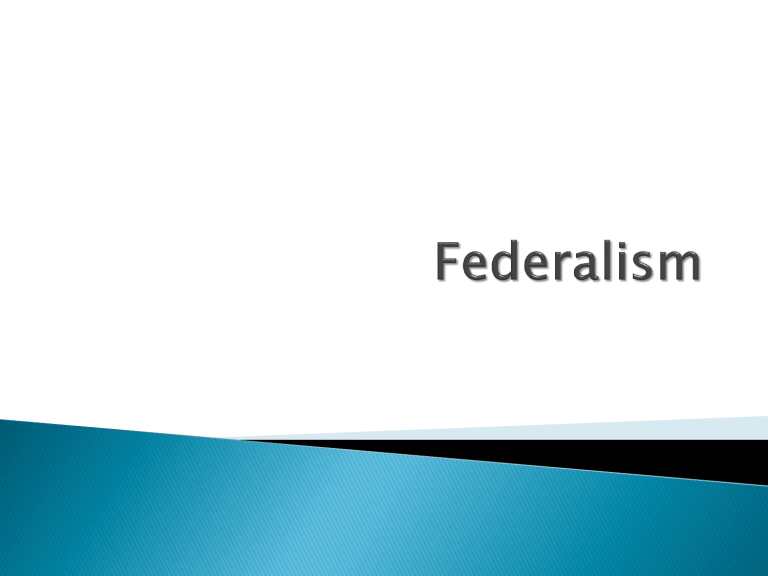
CHAPTER 2. FEDERALISM AND ITS FORMS Lecturer: Abdilahi Mohamed Hussein 2 Central government gives power to subnational governments (counties, provinces, etc.). Local governments typically have only those powers granted to them by the central government, rather than any reserved powers. Especially important is the central government’s role as provider of funds. Copyright 2011 Cengage Learning 3 Power is retained by local or regional governments. Example: The European Union Copyright 2011 Cengage Learning 4 Divides power between the national and lower level governments Each government has distinct powers that the other governments cannot override. Examples of federal systems: Australia, Brazil, Canada, Germany, India, Mexico, and the United States Copyright 2011 Cengage Learning 5 The authors of the Constitution wanted to combine a central government strong enough to maintain order with strong states. The large geographical size of a country. State governments have served as training grounds for national politicians and as laboratories in which new ideas can be tested. Federalism allows for many political subcultures. Copyright 2011 Cengage Learning 6 A way for powerful states to block plans Inequalities across states Some see expansion of national powers as a danger Influence of James Madison was critical James Madison ©The Granger Collection, New York Copyright 2011 Cengage Learning 7 Scholars and political leaders alike have debated the relative merits and drawbacks of federalism since the founding of the republic. Federal System ◦ Authority Divided ◦ Written Constitution ◦ Central Government and Constituent Governments Copyright 2011 Cengage Learning 8 Permits diversity, diffusion of power Local governments can handle local problems More access points for political participation Protects individual rights Fosters experimentation and innovation Suits large country with diverse population Advantages Makes national unity difficult to achieve, maintain State governments may resist national policies May permit economic inequality, racial discrimination Law enforcement and justice are uneven Smaller units may lack expertise and money Disadvantages Copyright 2011 Cengage Learning 9 Copyright 2011 Cengage Learning 10 Enumerated Powers ◦ The Necessary and Proper Clause ◦ Specifically grated by Constitution Implied Powers Inherent Powers (all sovereign nations) Copyright 2011 Cengage Learning 11 According to the Tenth Amendment, all powers that were not delegated to the national government belong to the states In theory, states still retain all powers not delegated to the national government, but in reality the national government has expanded the scope of governmental action on a grand scale. Copyright 2011 Cengage Learning 12 The White House: Symbol of the United States Copyright 2011 Cengage Learning 13 Police power: In the United States, most police power is reserved to the states. Copyright 2011 Cengage Learning 14 Concurrent Powers Power to Tax National Government State Government Power To Make and Enforce Laws Power To Establish Courts Copyright 2011 Cengage Learning Power To Police (Limited) 15


